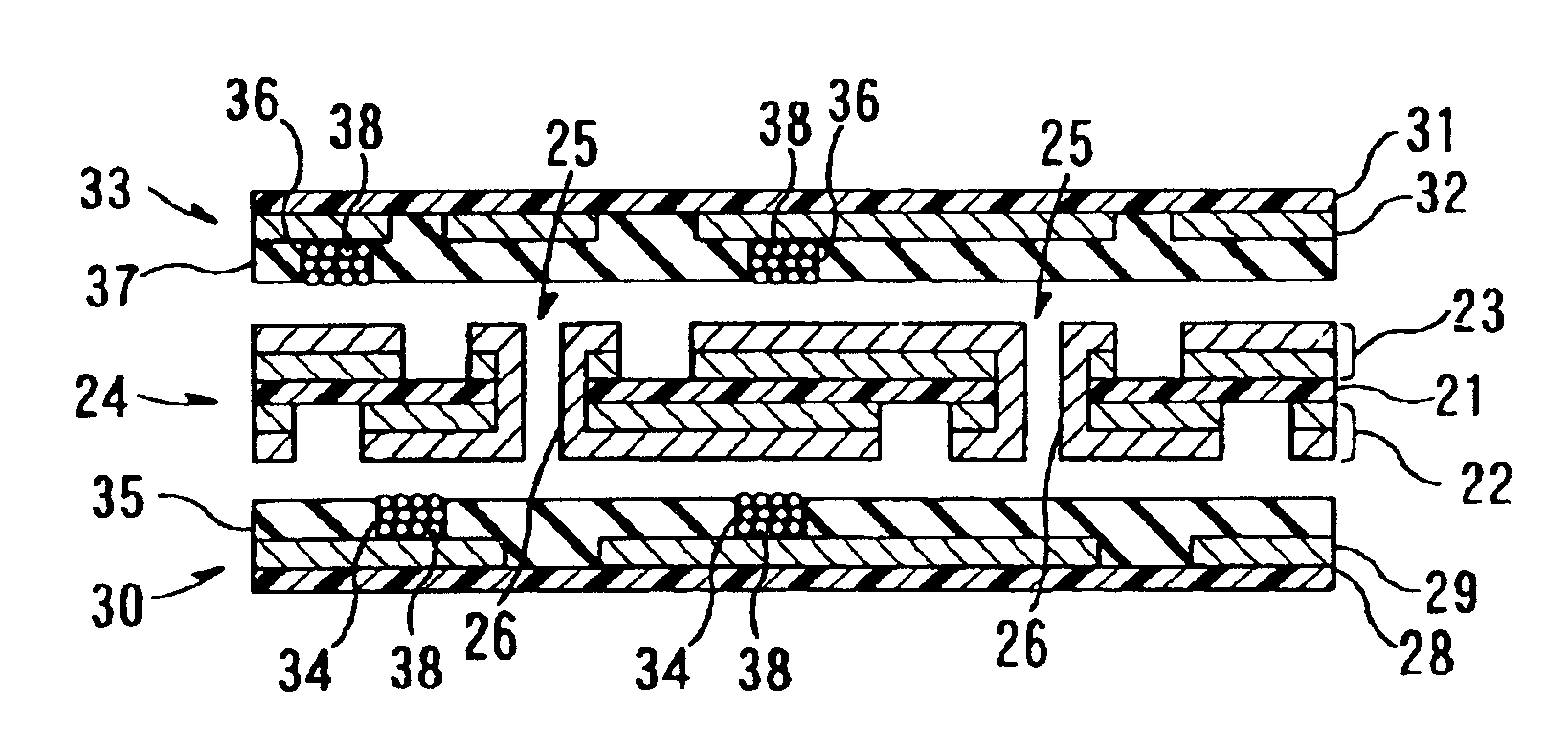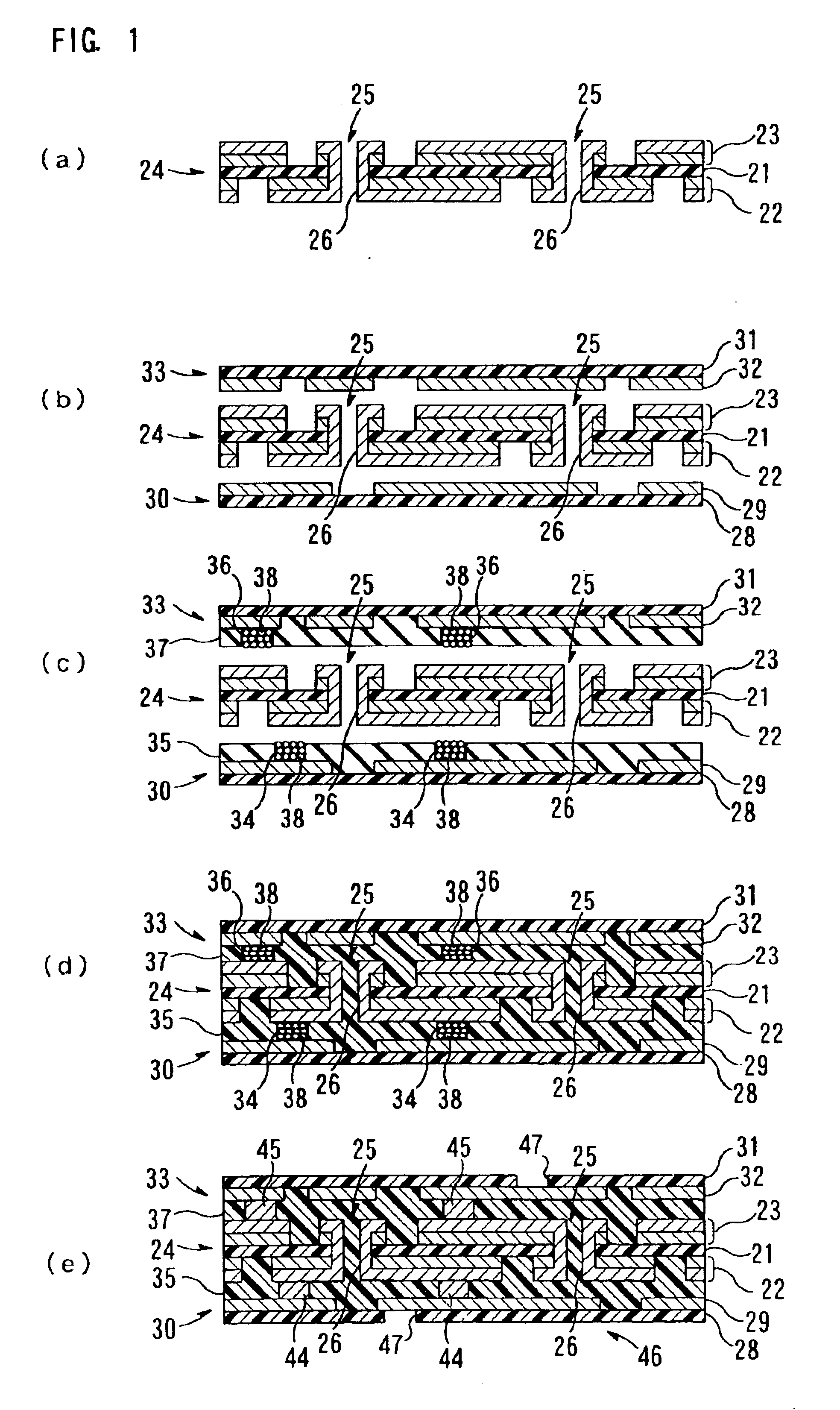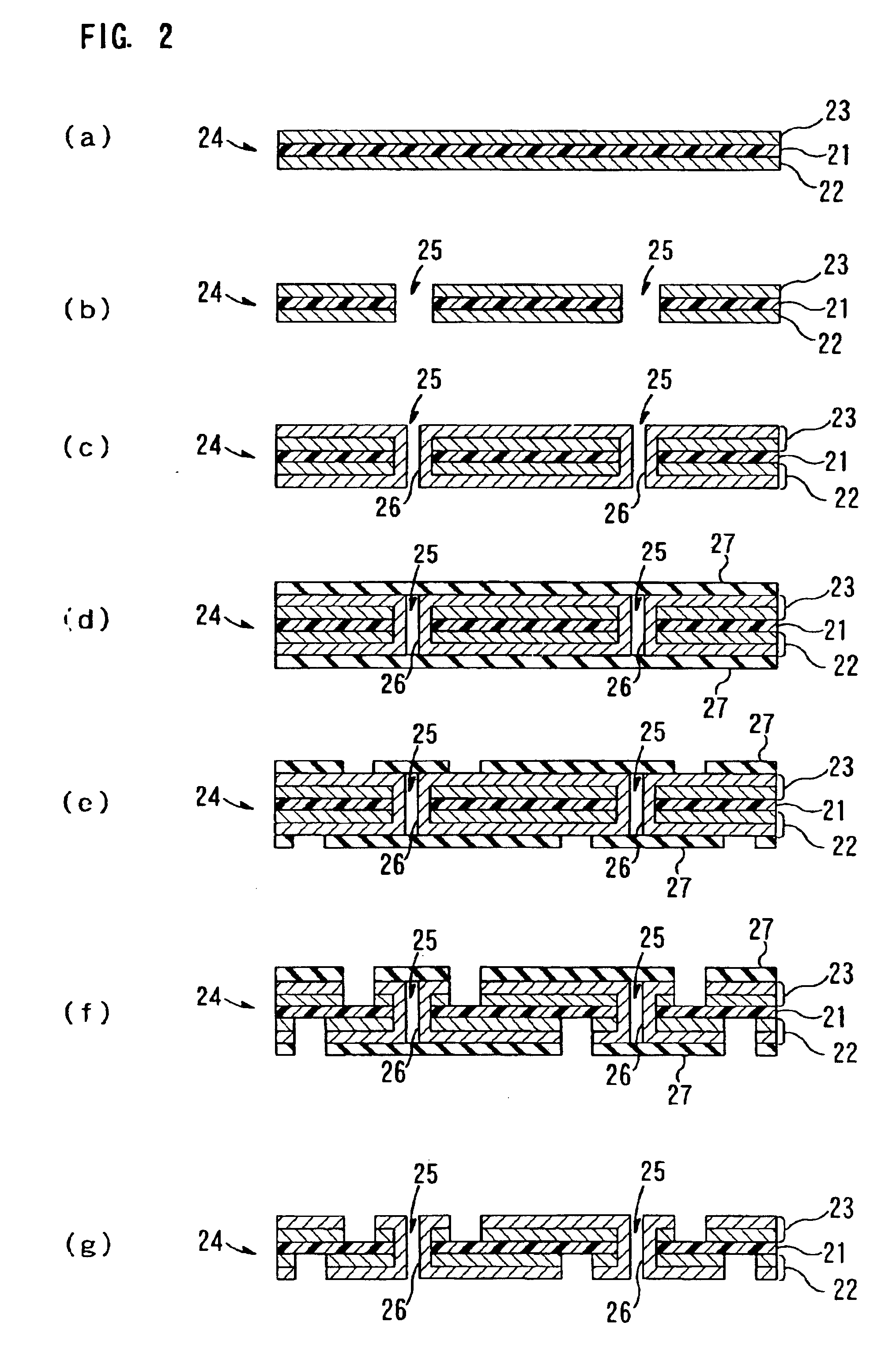Multilayer flexible wiring circuit board and its manufacturing method
- Summary
- Abstract
- Description
- Claims
- Application Information
AI Technical Summary
Benefits of technology
Problems solved by technology
Method used
Image
Examples
example 1
[0101]The double-sided substrate, in which the first conductor layer and the second conductor layer, each comprising a copper foil having thickness of 18 μm, are laminated on both sides of the first insulating layer comprising polyimide resin having thickness of 13 μm, respectively, was prepared (See FIG. 2(a)).
[0102]Then, after through holes having a diameter of 100 μmφ was formed in the double-sided substrate at specified positions thereof by drilling (FIG. 2(b)), the through holes were plated with copper to form the through-hole plated layers having thickness of 18 μm (FIG. 2(c)).
[0103]Sequentially, photoresists comprising dry film resist were laminated on the first conductor layer and the second conductor layer, respectively (See FIG. 2(d)). Then, the photoresists were exposed to light through photomasks corresponding to their specific patterns and then developed, to form the photoresists in specific resist patterns (See FIG. 2(e)).
[0104]Then, the first conductor layer and the s...
PUM
| Property | Measurement | Unit |
|---|---|---|
| Temperature | aaaaa | aaaaa |
| Thickness | aaaaa | aaaaa |
| Size | aaaaa | aaaaa |
Abstract
Description
Claims
Application Information
 Login to View More
Login to View More - R&D
- Intellectual Property
- Life Sciences
- Materials
- Tech Scout
- Unparalleled Data Quality
- Higher Quality Content
- 60% Fewer Hallucinations
Browse by: Latest US Patents, China's latest patents, Technical Efficacy Thesaurus, Application Domain, Technology Topic, Popular Technical Reports.
© 2025 PatSnap. All rights reserved.Legal|Privacy policy|Modern Slavery Act Transparency Statement|Sitemap|About US| Contact US: help@patsnap.com



